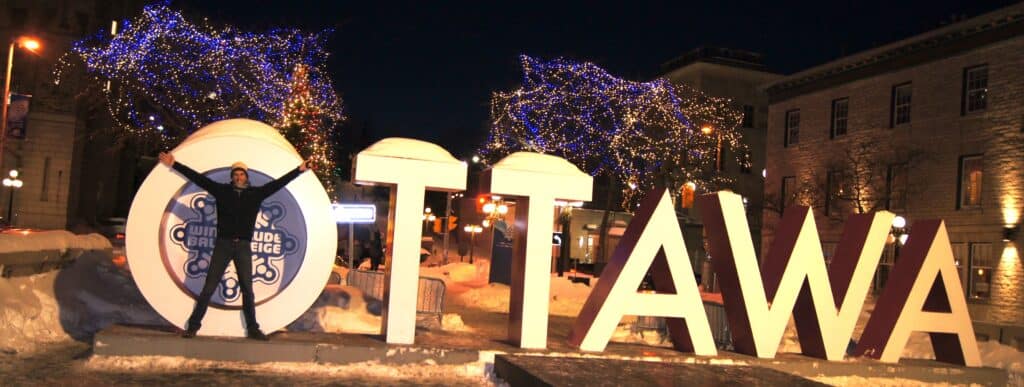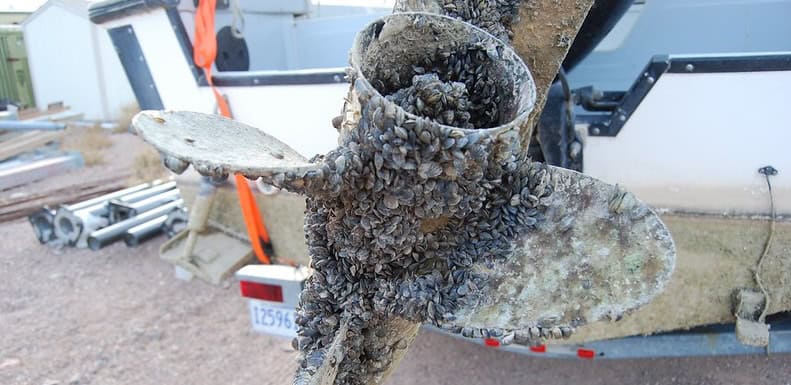By Andrew Cox, Invasive Species Council CEO.

Loss driving action.
Daniel Suave, the Canadian Council on Invasive Species secretariat told me a fact that helped explain the gravity of his work. Since the 1940s you can no longer find any elm forests that were once common throughout eastern Canada. There are no stands of mature elms, and only individual young trees survive.
Canadians have lost most of their elms and white lodgepole pines thanks to accidentally introduced invasive pathogens and insects. The Great Lakes have been invaded by zebra mussels and Asian carp and they don’t want any more.
I was invited to present the keynote address at two invasive species forums in Canada being held in February 2019, one state-based gathering at Vancouver on the country’s west coast, the second held the following week at the capital Ottawa was a national meeting. It was a chance to share Australia’s learnings and our recent successes. My keynote topic was Australia’s Evolving Biosecurity – Integrating the Environment into an Agricultural-based System. It was also a chance to learn where Canadians excel.
A different Invasive Species Council model
Canada has over twenty invasive species councils at the state or local level and an over-arching Canadian Council of Invasive Species. Most are independent bodies while some are run by government, but all receive the majority of their funding from local, state or federal government. Most of the councils have a board made up of a cross section of interests working on invasive species, often divided into chambers to ensure representation from government, community, First Nations, industry and science.
It is a different model from Australia’s Invasive Species Council a wholly independent body with a skills-based board and funded almost entirely by donations.
I can see the strength of the Canadian model. I met the boards of some of these councils and was impressed by the depth of commitment to addressing invasive species and the willingness of diverse organisations to work together. Government, the main investor, used the councils to deliver awareness programs that had strong industry and community buy-in. The boards of the invasive species councils were where collaboration and consensus building occurred.
Plenty of lakes and aquatic pests
The standout area in Canada’s response to invasive species was their management of aquatic invasive species. Canada’s ancient ice sheet has left a land riddled with about two million lakes. Aquatic sports are extremely popular. Fishers, boaters and those with lakeside cabins have seen invasive fish such as Asian carp and sea lampreys or aquatic weeds such as European frogbit, phragmites and Eurasian watermilfoil destroy their favourite retreats.

An extensive program led by the British Columbia government seeks to keep zebra and quagga mussels reaching the west. They have an awareness program to ensure canoes and boats moving from the affect east to the pest free west have no mussels attached to their crafts. A catchy phrase ‘clean, drain, dry’ helps encourage compliance, as do cleaning stations at boat ramps. This is backed up by a force of 70 armed conservation officers and sniffer dog teams that stop and check all drivers towing boats or carrying other watercraft into British Columbia after visiting infected lakes to the east.
I was most impressed by a sophisticated spatial model developed by researchers in Ontario that allowed them to understand the effect of different community awareness programs and climate scenarios on managing aquatic invasive species in the Great Lakes.
Hunters and fishers stopping invasive species
I visited the headquarters of the Ontario Federation of Anglers and Hunters. This is the largest not-for-profit fish and wildlife conservation organisation in Ontario and has been conducting an invasive species awareness program for 25 years. Their work focuses on the pathways that invasive species can be introduced and spread.
In order to better target their audience and develop more relevant communication messages, they conducted a large survey of anglers, hunters, boaters and trail walkers. From the almost 4,000 responses they worked out the most effective communication channels were determined. They also confirm some of the main barriers to action: that many recreational users don’t believe there are invasive species on their boats or gear, don’t believe there are invasive species in the lakes where there is concern that they may be spread, don’t see the problem as important or that it is not possible to prevent the spread of the invasive species.
They then developed a communication package to directly address each of the common barriers to action with images, facts and calls to action. The outputs from the communication campaign were also integrated into the messages of key partners at the state and national level.
Feral pigs are new to Canada and were only found in the wild in small numbers. However Canadian hunting groups were quick to recognise the potential environmental impact and were supporting efforts to act early and support eradication programs. This was a strong principled stand consistent with the conservation ethic of hunter representative bodies, in contrast to the action of many hunters in Australia that actively spread feral pigs.
Stopping firewood movement
In an attempt to stop the emerald ash borer spreading beyond areas close to the US border in the southern provinces, campers are encouraged to buy local firewood. Some national parks ban wood being brought into campgrounds. Despite this, many campers still arrive at a national park with firewood transported from infested areas. There is an attempt to boost educational campaigns to build awareness about the dangers of moving firewood and promote consistent messages, e.g. ‘Buy it where you burn it’ and expand the network of bins for disposal of transported firewood before moving into an uninfected area.
Building connections
I met with members of each of the province-wide Invasive Species Councils at their annual meeting, learning from First Nations, industry, government officials, community members and researchers about their invasive species challenges. In Ottawa I met with the sole national Greens Party politician Elizabeth May and at the two forums I met with representatives from US-based organisations working on invasive species.
Canadians shared the same challenge of waiting until it was too late and under-investing in prevention. I learnt that when emerald ash borer first arrived in Ontario the province’s Minister of Natural Resources and Forestry was presented with three options ranging from a $20-$30 million proactive campaign to do nothing. They decided to do nothing and have now spent more than two billion dollars responding to the outbreak!
Canadians were keen to learn from Australia’s leadership on biosecurity and develop deeper connections. National governments were already collaborating on biosecurity via a ‘quad’ arrangement that involved regular meetings between Canada, Australia, New Zealand and the United States.
Strong connections were formed with many of the Invasive Species Councils, especially the British Columbia branch, the oldest of the all the councils. They were keen to build a connection with our board and plan to bring a contingent to the upcoming Australian Biosecurity Symposium at the Gold Coast in August.
Andrew was the guest of the Invasive Species Council of British Columbia and the Canadian Council of Invasive Species.


